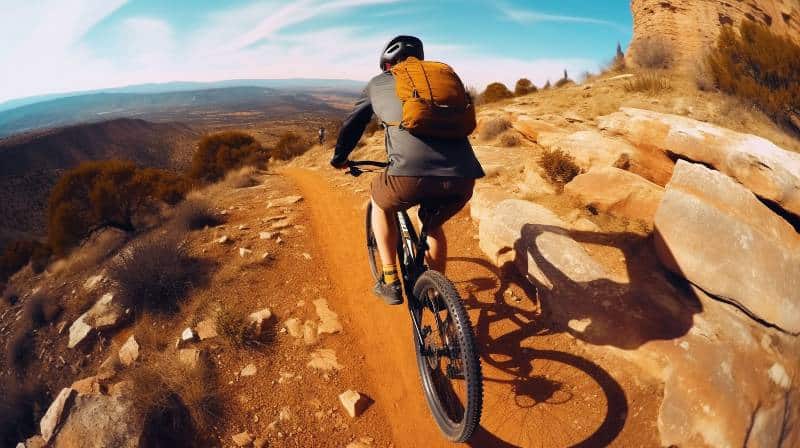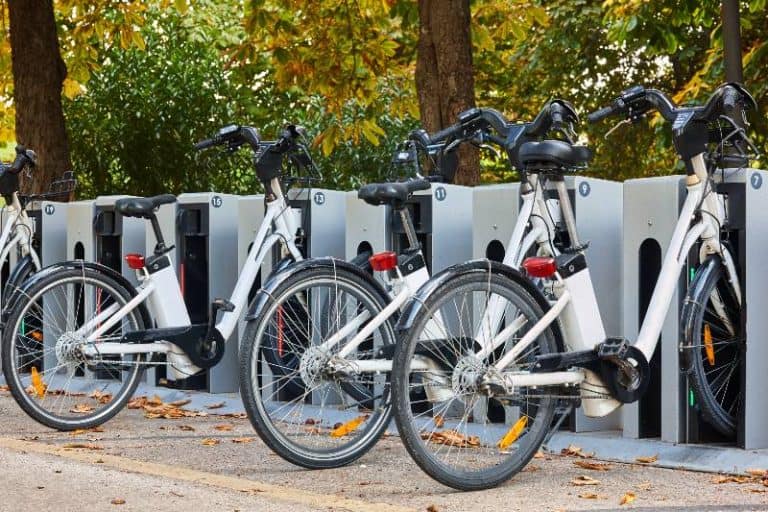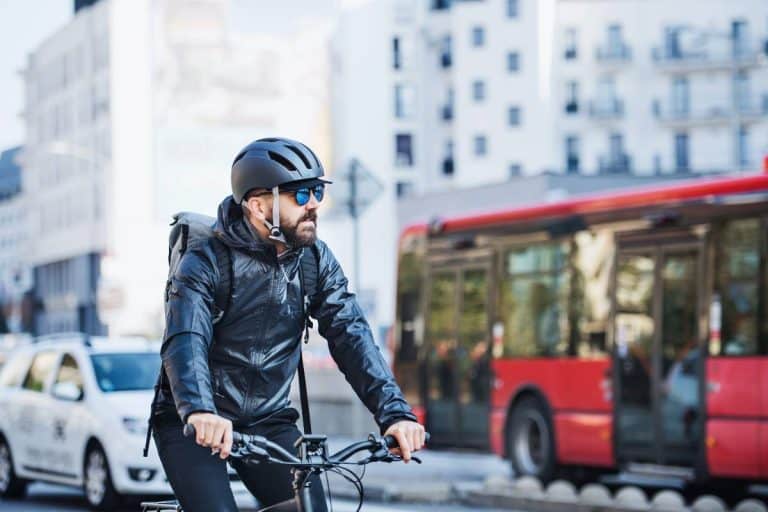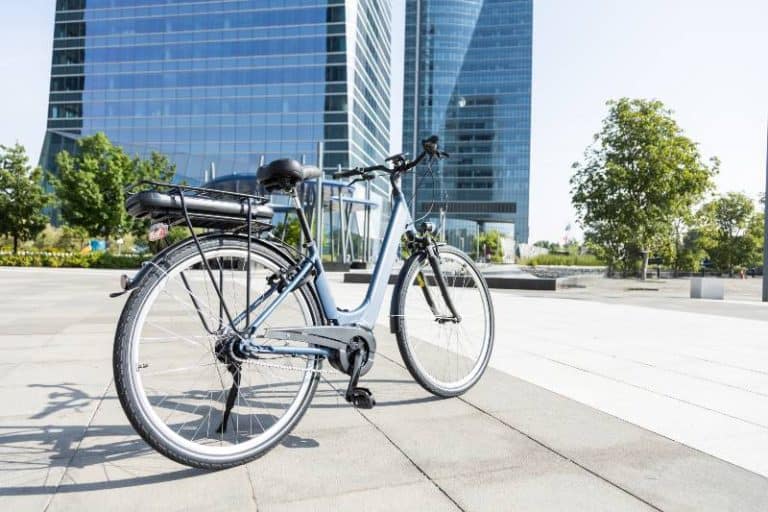Find Your Perfect EBike: A Guide to Electric Mountain Bikes
Electric mountain bikes are quickly gaining popularity among cyclists of all skill levels. With the variety of models out there, it can be hard to figure out which one is best for you. Whether you’re a hardcore trail rider or looking for an enjoyable leisurely ride, choosing the right electric mountain bike will ensure that your time spent on two wheels is as comfortable and enjoyable as possible. In this blog post, we’ll share some tips and advice on how to choose the right electric mountain bike that fits your specific needs and riding style.
When choosing the best e-MTB, it is important to consider both the motor and battery, as well as the components. This is because the added weight of the motor and battery can create additional strain on the components, especially when riding at higher speeds.
Key Takeaways
- Understand the different types of electric bikes and find one that fits your riding style.
- Know how much motor power you need for the type of terrain you’ll be riding on.
- Consider the battery capacity and range, as well as its recharge time when selecting an e-mountain bike.
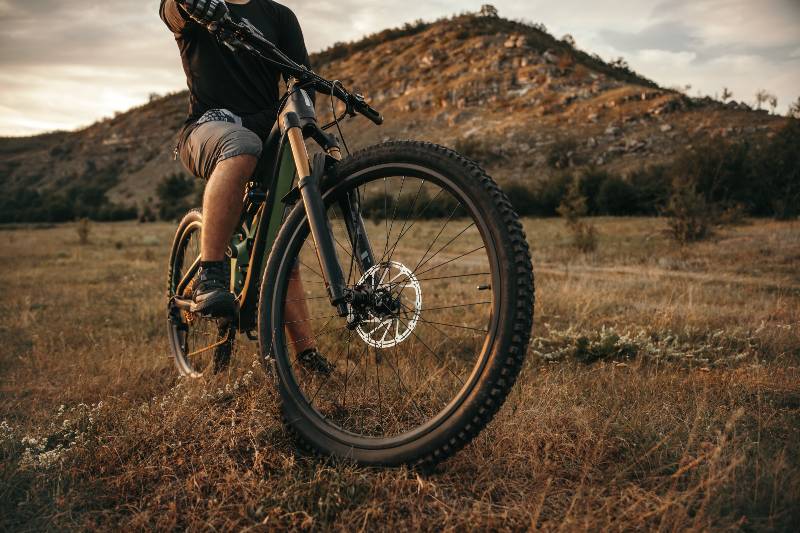
Assessing your needs
Terrain and trail types
Trail riding
This is typically the starting point for those who want to experience the joys of mountain biking. It entails riding a regular mountain bike on off-road trails designed for mountain biking, including multi-use paths, bridleways, and other non-technical routes.
Trail-riding bikes do not need suspension, although many have front suspension for comfort. However, most trail riding can be done on a hybrid or a cheap MTB with no suspension.
Hardtail
To clarify, a hardtail refers to a mountain bike that only has suspension on the front, rather than being a distinct type of mountain biking. In the past, mountain bikes did not have any suspension, but nowadays most have at least front suspension.
Single Speed
As bikes have evolved, a new trend has emerged where some mountain bikers are opting for a simpler MTB style with just one gear. This choice is made to avoid the extra weight and inconvenience of multiple gears. While single-speed dirt jumping and trial bikes have been common, there is now a growing number of riders who are choosing to ride regular trails with just one gear.
Singletrack
Most mountain bikers move from wide multi-purpose routes to narrower trails known as singletrack. Very simply it is a path that is only wide enough for one bike at a time.
Of the different MTB styles and disciplines this is one of the most varied and can be done as most of the mountain biking types below. It can be anything from a simple path beside a farmer’s field to a very difficult technical descent in the mountains.
The single track is generally natural without lots of manmade features, usually, they are also multi-use so watch out for walkers. In areas where routes are maintained, you’ll get some banked corners (berms) to make the ride more flowing and other features to improve the ride.
Riding style
All-mountain / Enduro style: Enduro is a type of competition in the world of moto racing, where the downhill sections are timed, but the uphill sections are not. It involves aggressive, technical riding on single and eroded double-track trails in the backcountry. The bikes used in Enduro are designed to be better at going uphill than downhill-specific bikes but are not as versatile as XC or Trail bikes. These bikes usually have wider tires and a front suspension with about 150mm travel, making them sturdier and more robust than XC or Trail bikes.
Trail: The next mountain biking style is characterized by its equal emphasis on technical downhill riding and uphill/rolling cross-country terrain. This style is the most popular, and it offers a variety of experiences. The mountain bikes used for this style are also the most popular, with reduced weight, mid-range front fork travel (120-150 mm), and a bike geometry that prioritizes comfort over pure performance. These bikes are mostly full-suspension.
Cross-country (XC): Cross-country mountain biking prioritizes uphill climbing and high-speed riding during long rides in remote areas. The crucial factor for XC bikes is their weight and how smoothly they shift gears. The bike’s capacity to maneuver through challenging terrain is less significant than how well it rolls and pedals. To this end, very costly, lightweight full-suspension bikes or frequently hardtail mountain bikes are preferred.
Fat biking: Introducing the latest addition to the world of riding styles. These bicycles are specifically designed for riding on snow and sand, or any terrain that requires extremely wide tires (up to 5 inches) to ensure optimal traction. This riding style emphasizes cycling in all four seasons.
Fitness level and distance
When it comes to picking out a mountain bike, some of the key factors to consider are your fitness level and the distances you plan on riding. Assessing your individual needs in these areas will help guide you toward the right bike for you. If you’re an avid cyclist looking for a challenge, you may want an e-bike with a more powerful motor that can handle tougher terrain and longer distances. On the other hand, if you’re just starting out or looking for a more gentle ride, opting for an e-bike with a less powerful motor may be the better choice.
For those keen to learn more about mountain e-bikes, this article is a must-read! From the basics of electric mountain bikes to tips on how to choose the right model for you, we cover it all.
Types of electric mountain bikes
Hardtail
A hardtail is a type of mountain bike that typically has a suspension fork on the front but no rear suspension, resulting in a firm, unsuspended frame. These bikes are favored by new off-road cyclists since they are lighter and less expensive than other options.
Full-suspension
You may sometimes see this written as “FullSus” This is a compound of ‘full’ & ‘suspension’. As the name suggests, full-suspension mountain bikes have both front and rear suspension, they can also be known as dual-suspension mountain bikes. The addition of a rear shock makes these bikes more efficient and comfier to ride on difficult off-road terrain. The rear shock also improves the bike’s traction and control resulting in more rider comfort.
Fat tire
A fat tire electric bike is an e-bike that comes with wider tires than regular bikes. These tires are twice as thick and provide a higher capacity to ride on multiple surfaces compared to narrow tires. These bikes are more suitable for off-road use due to their sturdy design.
However, they also perform well as beach cruisers, and that is the beauty of fat tires. Overall, they improve control and balance on almost any type of terrain, making these bikes perfect for riders who want more versatility and comfort.
Key features to consider
Motor type and power
When it comes to picking out a mountain e-bike, some of the key factors to consider are your fitness level and the distances you plan on riding. Assessing your individual needs in these areas will help guide you toward the right e-bike for you. If you’re an avid cyclist looking for a challenge, you may want an e-bike with a more powerful motor that can handle tougher terrain and longer distances.
On the other hand, if you’re just starting out or looking for a more gentle ride, opting for an e-bike with a less powerful motor may be the better choice. Whatever your fitness level and preferred distance, there is a perfect mountain e-bike out there waiting for you to hit the trails with confidence.
Battery life and range
One of the most important factors is the battery life and range. After all, you want to make sure your bike can handle the long and demanding mountain trails without dying out halfway through. With advances in technology, many mountain bikes today offer impressive battery life and range, allowing you to confidently tackle even the toughest trails. But it’s still crucial to do your research and find an e-bike that meets your individual needs and preferences.
Frame material and geometry
A good frame material can make a huge difference in the performance of your bike, as it affects both the weight and stiffness of the overall structure. Additionally, the geometry of the frame can impact the handling and feel of the bike, which is especially important when navigating rough terrain. Whether you prefer a carbon fiber frame or an aluminum one, it’s important to prioritize durability and comfort for the best riding experience.
Suspension and brakes
When it comes to buying a mountain e-bike, there are a handful of key features to keep in mind. One of the most important factors is its suspension, which can make a world of difference when tackling rough terrain. A high-quality suspension system will offer a smooth ride, absorb shock, and keep you stable on the trickiest of trails. Equally important are the brakes, which can mean the difference between a clean stop and a nasty spill. Look for a bike with strong, responsive brakes that can handle rapid deceleration and provide ample stopping power when needed.
Gears and drivetrain
These components determine the ease and smoothness of shifting, which can make or break a ride. Look for a drivetrain with a wide range of gears to handle any terrain and a responsive shifting system. Ultimately, the goal is to find a bike that can climb steep hills and easily handle descents, all while providing a comfortable and enjoyable ride.
Budget considerations
Price range
One important factor to keep in mind is your budget. It’s important to have a clear understanding of what price range you are comfortable with before you start shopping. This will help you narrow down your options and focus on the bikes that are most suitable for you. While cost is certainly a consideration, it’s also important to keep in mind that investing in a high-quality bike can give you years of enjoyment and satisfaction out on the trail.
Financing options
Of course, budget is always a primary concern. You want to be sure you’re getting the best value for your money, while still buying a bike that suits your needs. Luckily, there are a variety of financing options available to help make the purchase possible. Whether you’re looking to finance through the manufacturer or an independent lender, take the time to explore all of your options.
Cost of maintenance and replacement parts
When it comes to buying mountain e-bikes, there are a few key features to keep in mind. Of course, budget is always an important consideration. You want to make sure you’re investing in a quality bike that fits within your price range. Additionally, it’s essential to factor in the cost of maintenance and replacement parts. While e-bikes are generally lower maintenance than traditional bikes, repairs, and replacements can still add up over time.
Test ride and research
Trying out different models
When considering purchasing a mountain electric bike, it’s important to do your research and take a test ride before making a decision. With so many different models available, it’s worth your time to shop around and see what options exist. Trying out multiple bikes will help you get a feel for what features are important to you and which ones you’re willing to compromise on. Additionally, be sure to research and compare prices, as well as reviews from other riders
Reading reviews and user experiences
When it comes to buying a mountain bike, there are several things to consider. One way to get a better idea of what to expect is to read reviews and user experiences. While it’s important to take everything with a grain of salt, feedback from other riders can provide valuable insights into a bike’s durability, performance, and overall experience. When looking at reviews, pay attention to common themes and issues that come up, as these can give you a good sense of what to expect. Additionally, don’t be afraid to reach out to other riders for more detailed insights or to ask questions about their experience.
Consultation with experts
When it comes to buying a mountain bike, there are a lot of factors to consider. One important step to take is to consult with experts in the field. By seeking out professionals who are knowledgeable about all aspects of mountain bikes, you can gain valuable insights that will help you make an informed decision.
Whether it’s learning about the latest technology or understanding how different components work together, these experts can provide you with the information you need to find the perfect bike for your needs. Don’t hesitate to reach out to those who have years of experience and a passion for the sport – their guidance can make all the difference in your search for the ultimate mountain ebike.
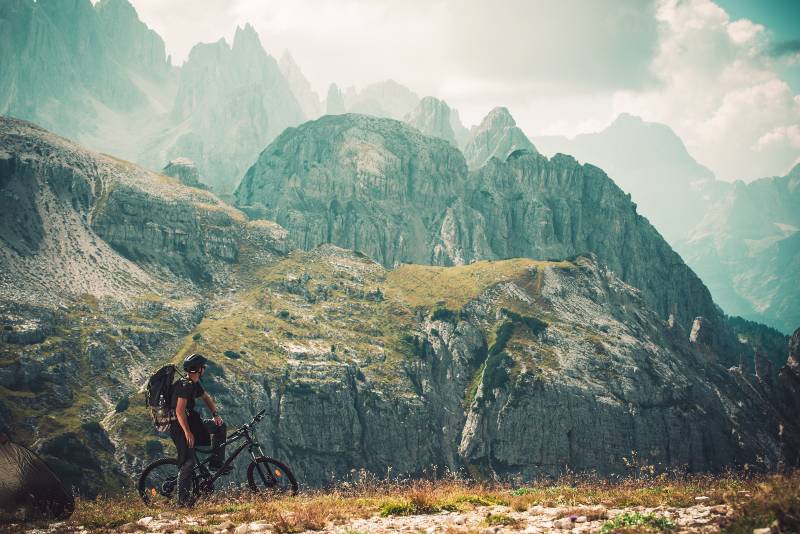
How To Choose The Right Electric Mountain Bike FAQs
What factors should I consider for suspension and brakes?
When it comes to suspension and brakes, you want to make sure that the components are high quality and well-suited for the type of riding that you plan on doing. The suspension should be adjustable, as this will allow you to customize it to your specific needs. As far as brakes go, disc brakes are typically preferred over rim brakes due to their superior stopping and efficiency. You’ll also want to consider brake type, rotor size, and pad material when selecting the right brakes for you.
How do I decide on the appropriate gear and drivetrain?
The gear ratio and drivetrain of a mountain electric bike should be tailored to the terrain that you plan on riding. If you’re primarily going to be tackling steep, technical trails, then a low gear ratio with lots of torque is probably ideal. However, if you’re looking for more speed and efficiency on flatter areas, then a higher gear ratio and lighter components may be a better choice. Additionally, make sure to take into consideration the number of gears you’ll need and how easy it is to shift between them.
What is the typical price range for electric mountain bikes?
The price range for electric mountain bikes can vary widely, depending on factors like the type of motor and battery, frame material, components, and more. Generally speaking, you’ll find most models fall in a range between $1,000 and $5,000 – but they can go much higher than that. It’s important to do your research and compare prices to find the best deal for you. Additionally, be sure to factor in any additional costs such as taxes, delivery fees, insurance, maintenance, and more when determining your budget.
Are there financing options available for e-MTB purchases?
Yes, there are several financing opportunities available for electric mountain bike purchases. Many retailers offer promotional financing options that can help you spread out the cost of your purchase over time. Additionally, some companies may also offer special discounts or loyalty rewards for those who choose to finance their purchase.
How can I find reliable reviews and user experiences?
When researching electric mountain bikes, it’s important to read up on user reviews and experiences. This can be a great source for getting an inside look at how different models perform in the wild. Look for reputable websites that have verified customer reviews, and pay attention to common themes and issues that come up, as these can give you a good sense
Conclusion
choosing the right electric mountain bike for your needs is a matter of evaluating your own personal preferences and understanding what each bike can offer. It’s important to consider how you plan to use your bicycle, as well as the distance, terrain, and other factors that will make a difference in how safely and comfortably you ride.
With all of these elements in mind, it should be much easier to narrow down your options to choose the best electric mountain bike for you. But if you’re still feeling unsure about which electric mountain bike is right for you – no problem! We’re always here with expert advice and recommendations to help guide your decision. Plus, be sure to sign up for our newsletter and stay up-to-date with the latest in electric bicycle technology!
